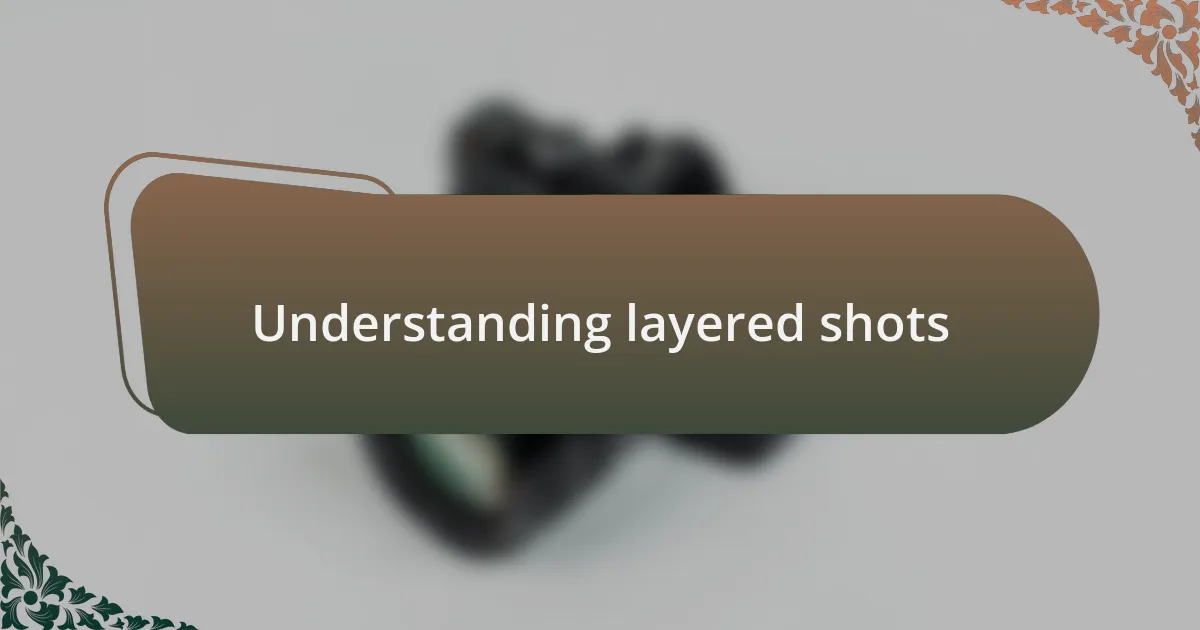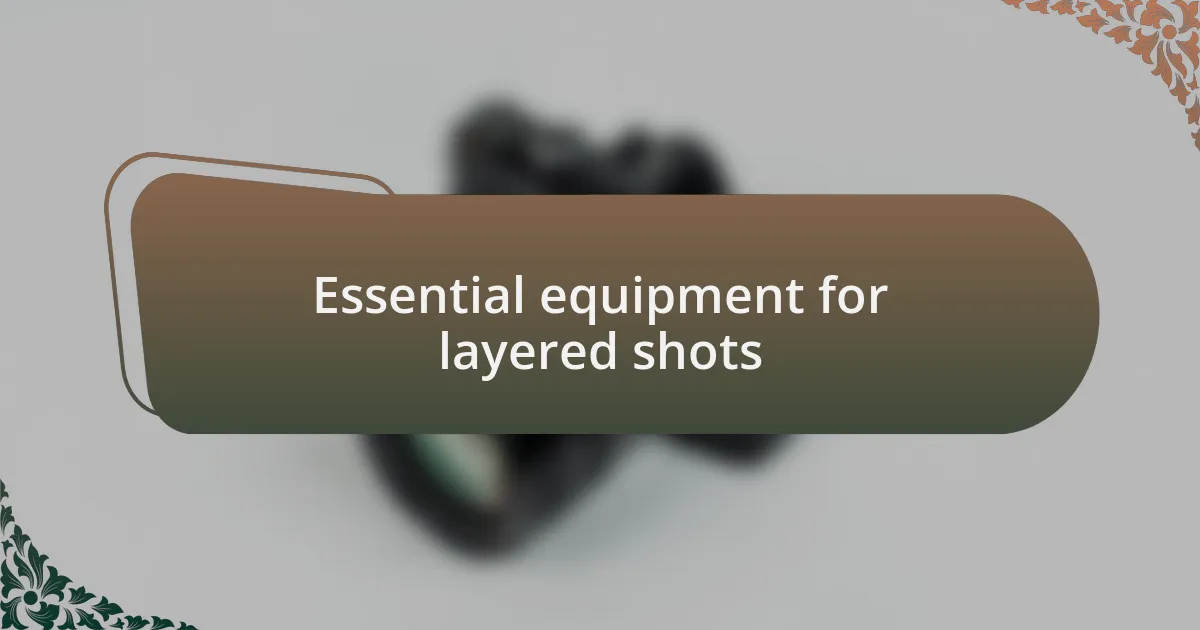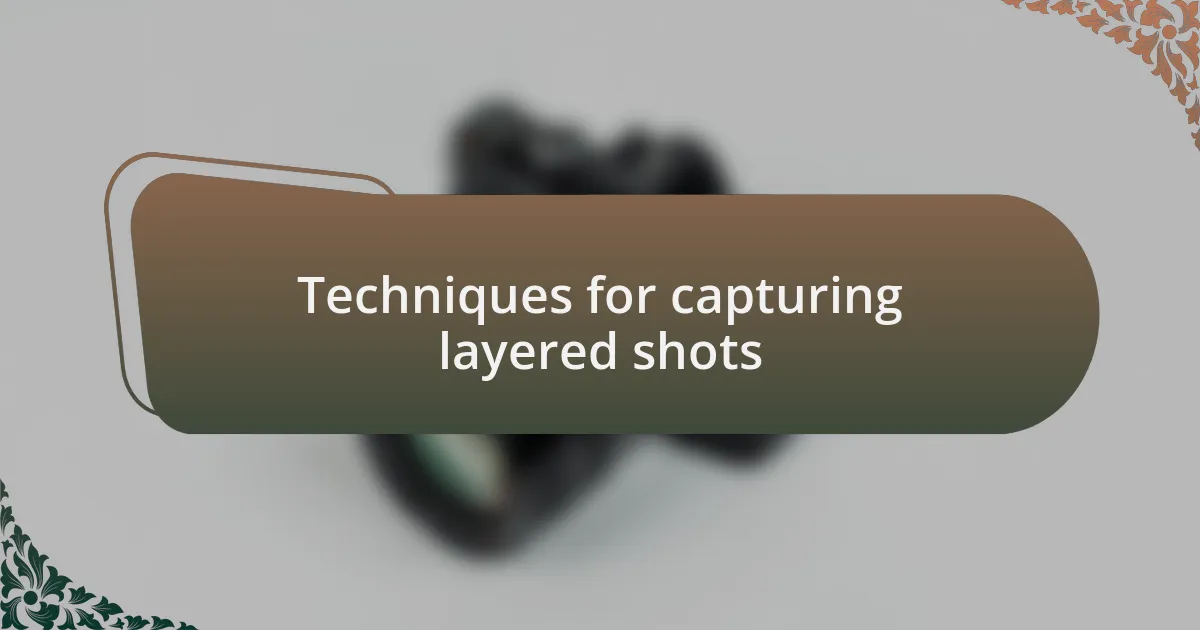Key takeaways:
- Layered shots enhance storytelling in photography by revealing multiple narratives through composition.
- Essential equipment includes a DSLR or mirrorless camera for depth control, tripods for stability, and filters for improved color and contrast.
- Composition, lighting, and focal length variations are key techniques for creating effective layered shots.

Understanding layered shots
Layered shots are a fascinating technique that allows photographers to create depth and interest in their images. I often see them as a way to tell a story—each layer revealing something new. Have you ever looked at a photo and felt as if there were multiple narratives unfolding at once? That’s the magic of layering.
In my experience, achieving a layered shot involves careful planning and a keen eye for composition. I remember a time when I captured an urban scene where a foreground of bustling pedestrians was contrasted against a faded, historic building. The layers not only drew attention but also evoked a sense of nostalgia. Isn’t it intriguing how such simple elements can transform a photograph into a dynamic experience?
It’s essential to think about the interaction between different layers—how they complement or contrast with each other. I often ask myself: What emotions do I want to convey through these layers? This introspection helps me choose the right elements, whether it’s juxtaposing bright colors against a muted background or placing a solitary figure in a vast landscape. Each decision shapes the viewer’s journey through the image.

Essential equipment for layered shots
When it comes to layered shots, your camera is the most crucial piece of equipment. I prefer using a DSLR or a mirrorless camera because they offer greater control over settings like aperture and shutter speed. This control allows me to manage the depth of field effectively, which is vital for achieving that stunning separation between layers. Have you ever noticed how a shallow depth of field can make foreground subjects pop, almost inviting the viewer to step into the scene?
Tripods are another essential tool I wouldn’t work without. They stabilize my camera, ensuring sharp images, especially in low-light situations or when using longer exposures. I recall a night shoot at a bustling city square where I set up my tripod, capturing light trails from passing cars while keeping the people in the foreground crisp and clear. The contrast created a vivid sense of motion against the stillness of the static elements. How do you think stability affects your ability to capture complex scenes?
Lastly, don’t underestimate the importance of filters. A polarizing filter, for instance, can enhance the colors in your layered shots by reducing reflections and increasing contrast. I often use one when photographing landscapes to bring out the depth in the sky while simultaneously enhancing the hues of nature below. It’s incredible how a simple tool can transform your perspective, isn’t it?

Techniques for capturing layered shots
To capture layered shots effectively, I focus on composition and framing. I like to thoughtfully arrange elements in the foreground, middle ground, and background. This arrangement creates a visual journey for the viewer. When I was photographing a misty forest, the way the trees lined up created a beautiful depth. Have you ever noticed how certain compositions can bring a scene to life?
Lighting plays a critical role in layering, too. I always pay attention to the direction and quality of light, as it can dramatically alter the layers’ appearance. During an early morning shoot, I remember the sun peeked through the trees, casting soft shadows that beautifully defined each layer. It gave the photograph a dreamy quality. How do shadows and highlights impact your perception of depth?
Experimenting with focal lengths has also been a transformative technique for me. I often switch between wide-angle and telephoto lenses, depending on the scene. Using a wide-angle lens can pull in a vast landscape, while a telephoto lens allows me to compress layers together, making distant objects seem much closer. I recall a trip to the mountains where I captured the rolling hills with a wide-angle, creating a sense of expansive depth. What lens do you usually reach for to achieve your desired effect?